 Mysteries
Mysteries  Mysteries
Mysteries  History
History 10 Surprising Stories About the Texas Rangers
 Humans
Humans 10 Philosophers Who Were Driven Mad by Their Own Theories
 Miscellaneous
Miscellaneous 10 Video-Game-Worthy Weapons and Armors from History
 Weird Stuff
Weird Stuff 10 Psychics Who Accurately Predicted Wartime Events
 The Arts
The Arts 10 Pieces of Art Inspired by a Broken Heart
 Health
Health 10 Science Fiction-Sounding New Medical Treatments
 History
History 10 Surprising Facts About the Father of Submarine Warfare
 Space
Space Ten Astonishing New Insights into Alien Worlds
 Weird Stuff
Weird Stuff 10 Bizarre Summer Solstice Rituals Still Practiced Today
 Mysteries
Mysteries Top 10 Haunting Facts About the Ghost Ship MV Alta
 History
History 10 Surprising Stories About the Texas Rangers
 Humans
Humans 10 Philosophers Who Were Driven Mad by Their Own Theories
Who's Behind Listverse?

Jamie Frater
Head Editor
Jamie founded Listverse due to an insatiable desire to share fascinating, obscure, and bizarre facts. He has been a guest speaker on numerous national radio and television stations and is a five time published author.
More About Us Miscellaneous
Miscellaneous 10 Video-Game-Worthy Weapons and Armors from History
 Weird Stuff
Weird Stuff 10 Psychics Who Accurately Predicted Wartime Events
 The Arts
The Arts 10 Pieces of Art Inspired by a Broken Heart
 Health
Health 10 Science Fiction-Sounding New Medical Treatments
 History
History 10 Surprising Facts About the Father of Submarine Warfare
 Space
Space Ten Astonishing New Insights into Alien Worlds
 Weird Stuff
Weird Stuff 10 Bizarre Summer Solstice Rituals Still Practiced Today
10 Scariest Witches Of World Mythology
Witches and witchcraft have captivated the minds of everyone: from angry villagers wondering why the women of the town were gaining a sense of independence to the average Joe wondering whether that herbal tea last night was a potion or just really bad tea. Witches have been seen as objects of wisdom and evil in folklore for many generations.
10 Kikimora

The kikimora, whose name is extremely fun to pronounce, is a household spirit who must—above all—be respected. She is the female equivalent and wife to the domovoi, or male household spirit, and her presence is always made known by wet footprints. So what makes the kikimora a witch you don’t want to cross? Well, she’s somewhat harmless, but if she is disrespected, she will whistle, break dishes, and throw things around. Unless you like all of your things broken, you’d best stay on her good side.
9 Circe
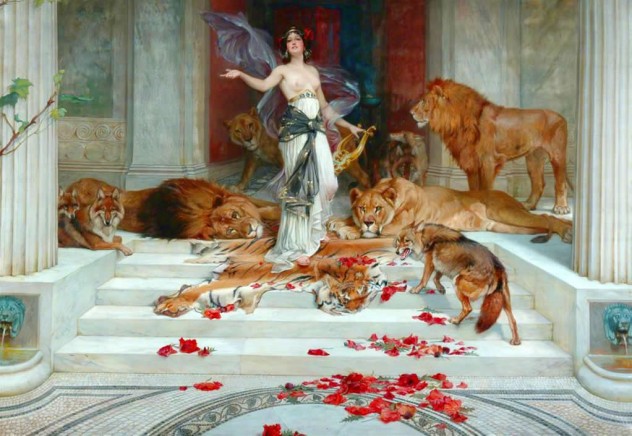
A famous character in Homer’s Odyssey, Circe was a witch who lived on an island called Aeaea. She took up a rather peculiar hobby—she would turn passing sailors into wolves and lions and all sorts of animals after drugging them. Hey, some people collect stamps, others like turning men into animals. Who are we to judge?
When Odysseus visited Aeaea, Circe turned his men into swine, but Odysseus was given a magical plant by the gods that prevented Circe from morphing him. After making Circe swear not to betray him, Odysseus and his men lived under Circe’s protection for a year before attempting to sail back to Ithaca.
8 Morgan Le Fay
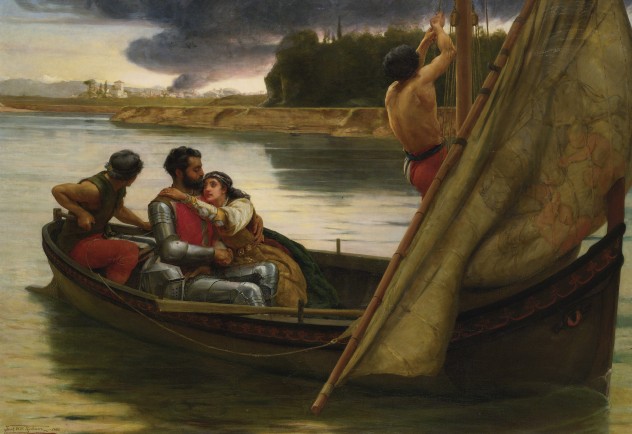
Most people are vaguely familiar with the legend of King Arthur and his companion the wizard Merlin, but few of us remember a character by the name of Morgan Le Fay. In the myths, she works tirelessly with her magic to bring down the good Queen Guinevere, who banished her from the court when she was younger. She tries to betray Guinevere’s lover, Sir Lancelot, and foil the quests of King Arthur’s knights. The ultimate fate of Morgan is unknown, but she does eventually reconcile with King Arthur and brings him to Avalon after his final battle.
7 The Witch of Endor
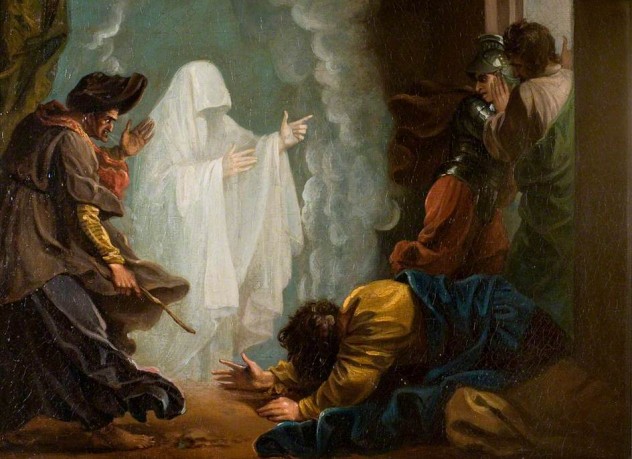 The Witch of Endor wasn’t necessarily malevolent, but the fate she spoke of was not one to be ignored. As the story goes, King Saul went to the Witch of Endor for answers about how to defeat the Philistines. The Witch then summoned the ghost of the prophet Samuel—who didn’t tell him how to defeat the Philistines—but prophesied that he would be defeated and join his three sons in the afterlife. Saul, who is wounded the next day in the battle, kills himself out of fear. And while the Witch didn’t technically make Saul kill himself, she was certainly an accessory.
The Witch of Endor wasn’t necessarily malevolent, but the fate she spoke of was not one to be ignored. As the story goes, King Saul went to the Witch of Endor for answers about how to defeat the Philistines. The Witch then summoned the ghost of the prophet Samuel—who didn’t tell him how to defeat the Philistines—but prophesied that he would be defeated and join his three sons in the afterlife. Saul, who is wounded the next day in the battle, kills himself out of fear. And while the Witch didn’t technically make Saul kill himself, she was certainly an accessory.
6 Jenny Greenteeth
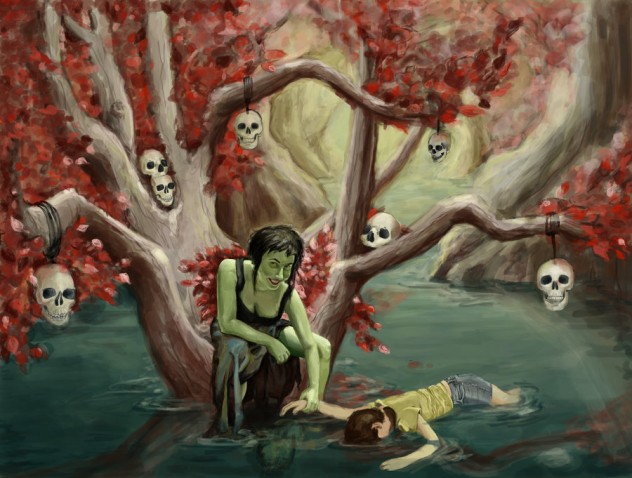
Depending on where in England you’re from, you may know this cruel hag as Ginny, Jinny, Jeannie, or Wicked Jenny. Jenny Greenteeth was a hag who would intentionally drown the young and the old for the sheer fun of it. In some legends, she devours the children and elderly. In others, she’s just a sadist who enjoys the pain her victims go through. She’s frequently described as having a green complexion and razor-sharp teeth. As with many creepy characters from folklore, she was probably used to scare children into behaving and staying close to the water’s edge when taking an afternoon swim. But the main moral to this story is this: stay away from green river hags.
5 Chedipe

Ah, the Chedipe. What art thou: a witch, a vampire, what? Either way, she’s no pretty dame in the moonlight. The Chedipe is a woman has died during childbirth or committed suicide and is to the Indian equivalent of the succubus. She rides on a tiger in the moonlight, and when she enters a home, not a soul will wake or notice her. She then sucks the life out of each man through the toes—yes, the toes—and leaves without a trace.
4 The Weird Sisters
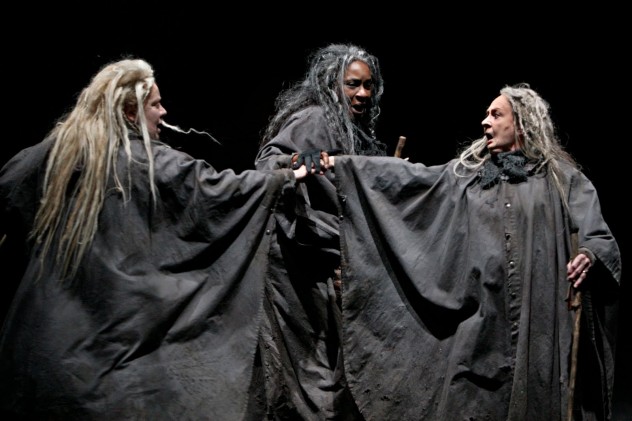
Shakespeare’s Macbeth is one of the Bard’s defining plays, with brilliant characters galore and a story rife with magic, betrayal, and fear. But the very first characters in the story are the ones that set everything in motion—the Weird Sisters. And yes, they are more than a little weird, but in this case “weird” means “fate,” so they are the Sisters of Fate. They act as agents of destruction and not only send Macbeth into a spiral of corruption and paranoia, they send all of Scotland to war just to take one man out of power. Now that’s evil.
3 The Bell Witch
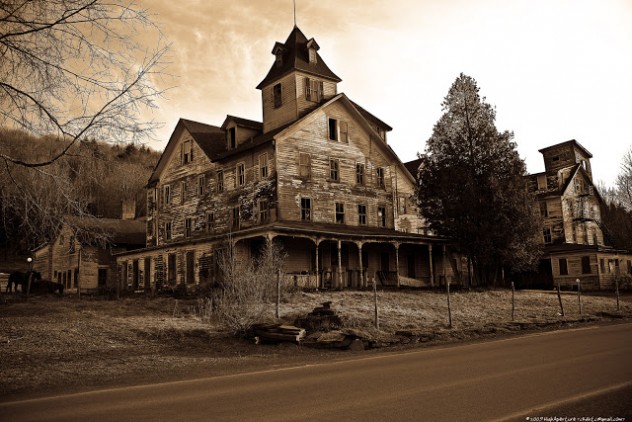 The Bell Witch is the most famous witch in American folklore, and her story is the kind that you’d tell around a campfire. The Bell Witch was supposedly a poltergeist that appeared in the home of John Bell, Sr. in 1817. The Bell Witch would attack members of the household and frequently swear at the family, and she eventually poisoned John Bell, Sr. by leaving a bottle of poison in the guise of medicine. Remind us to burn some sage tonight.
The Bell Witch is the most famous witch in American folklore, and her story is the kind that you’d tell around a campfire. The Bell Witch was supposedly a poltergeist that appeared in the home of John Bell, Sr. in 1817. The Bell Witch would attack members of the household and frequently swear at the family, and she eventually poisoned John Bell, Sr. by leaving a bottle of poison in the guise of medicine. Remind us to burn some sage tonight.
2 Hecate
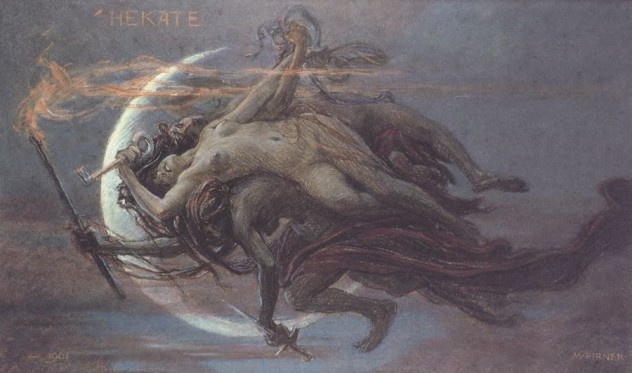 Hecate was the Greek goddess of witchcraft. She was also the goddess of witches, sorcery, poisonous plants, and a host of other witchy attributes. Hecate was the daughter of the titan Perses, and she is still worshipped by some Greek polytheists today. It is said that the very concept of a jinx came from her, and shrines to her were raised to prevent the wrath of evil demons and spirits in the Greek mythos. One of her names—Chthonia—means “of the underworld.”
Hecate was the Greek goddess of witchcraft. She was also the goddess of witches, sorcery, poisonous plants, and a host of other witchy attributes. Hecate was the daughter of the titan Perses, and she is still worshipped by some Greek polytheists today. It is said that the very concept of a jinx came from her, and shrines to her were raised to prevent the wrath of evil demons and spirits in the Greek mythos. One of her names—Chthonia—means “of the underworld.”
So what makes her so fearsome? Well, she’s the goddess of witchcraft. If she existed, she probably wouldn’t take too kindly to Europe’s (or Salem, Massachusetts’s) ancient habit of hating and burning/killing “witches” (who were likely just the unfortunate innocent). The fact that we’ve turned witches from fearsome wise-women who could inflict pain and healing into beautiful, televised women who use magic to cheat on their exams would probably irk her slightly.
1 The Graeae/Morai
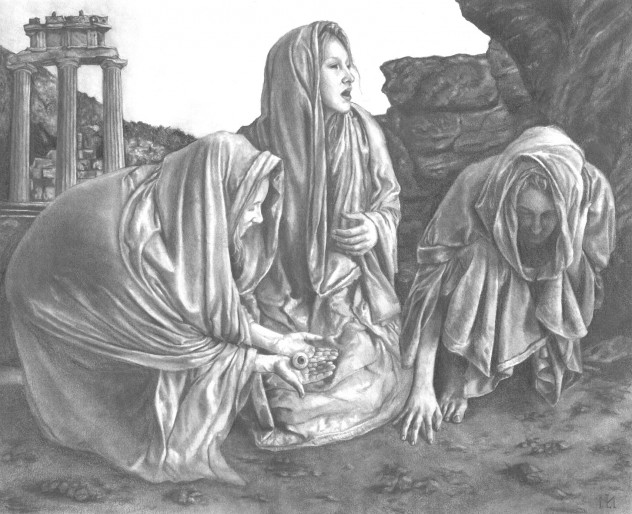
So what witches do we conclude our list with? Why the very spinners of fate, of course. The Graeae and the Morai are two separate trios of witches who understand the whims of fate, but since they are often lumped together we’ll mention them both. The Morai spun the loom of fate, and everyone’s fate was tied to their loom, even those of non-mortals.
The Graeae, on the other hand, were three malevolent sisters—kin to the Gorgons (Medusa and her two lesser-known sisters). The Graeae were not the friendliest bunch, but they did share an eye, which they passed between themselves. The Graeae also had knowledge of the unknown and of fate, but they did not control it. So which is worse—sisters to Medusa or those who could snip your string of life? We’d steer clear of both of them if we were you, dear reader.
Vlad Vekshtein is an eccentric writer and sci-fi geek who enjoys mythology as well. He’s happy to have never been turned into a toad by a vengeful witch. He’s also open to new list ideas, so if you have any, sound off in the comments!








